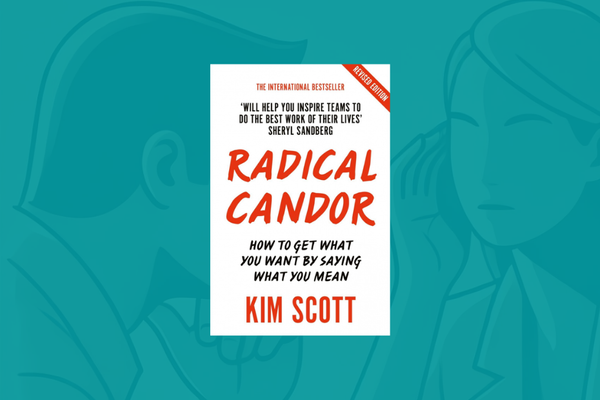5+1 best marketing books

You are lucky if you are looking for resources to learn about online marketing. You type some words into your favorite search engine and get impactful blog posts, useful online courses and you can watch a ton of videos of experienced marketing professionals.
But what about books?
What should you do if you want to choose a rather classic way of learning, then reading the 76th tip of a shady guru?
Does it even make sense in today’s fast-changing environment to learn from books?
I love to read, but I get the majority of the information useful to my job from industry blogs, podcasts, Google Guideline’s, and from Twitter threads. These are all good resources but hardly a compact picture of the world of marketing.
Online resources often answer the How question, when beginner marketers are interested in the Why.
In the business and marketing space, there are a lot of outdated, far from actionable books. If you choose badly and pick a smiling guru’s ego-boosting book where you can learn about our business superhero, then probably you won’t read any marketing related book again and maybe you even lost your interest in marketing altogether.
- Look for the good authors!
- Find book recommendations for practicing marketing professionals!
- Explore with your eyes open, find mentioned books in interviews, ask for recommendations from your experienced colleagues!
I do the same!
The books I recommend for you do not even mention the last Google Algorithm Update and you definitely won’t receive a Data Studio Template.
Instead, you got my honest opinion about good marketing books and I don’t even ask for your email address.
1. Seth Godin: This is marketing
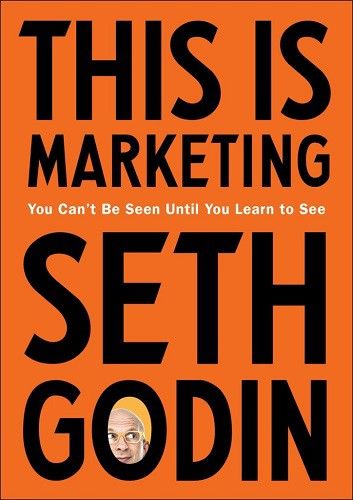
Writers published an insane number of books about marketing from several different angles. Some of these books curse the marketing world altogether, others offer practical advice. We can find business books written just for self-PR which can offer a demoralizing experience if you witness to read them.
Seth Godin’s book is completely different.
The author is holistically writing about marketing. He is talking about empathy, messaging, the purpose of marketing and he even mentions tools. Seth Godin attaches case studies to show the validity of his already well-backed thoughts.
He believes that people do not want the product, they want the experience of what the product can provide.
Seth Godin differentiates two types of marketing:
- Industry-lead marketing: make the customer’s dreams and hopes a reality.
- Marketing-lead marketing: the newest Facebook hack, design, logo…
Besides the well-known concept of MVP (minimum viable product), Seth introduces a new concept (at least for me), the SVM (smallest viable market).
According to the concept of the smallest viable market, our message is not for everyone. The challenge of marketing is to find those customers who need our product.
The book is analyzing marketing as a discipline but takes time to write separately about online marketing and the role of online advertisements.
According to Seth Godin online advertisements:
- make possible to precisely target potential customer,
- immediately,
- in a measurable way,
- and in the least emphasized way.
The author is writing about the difference between direct marketing and brand marketing either.
Until direct marketing is action-based and requires activity from the customer, then the purpose of brand marketing is to form a unique culture. Direct marketing is effectively measurable until brand marketing is not.
At the end of the book, Seth is writing about the significance of marketing funnels and our ideal relationship with them.
This is marketing is offering a comprehensive view of marketing without giving generic bits of advice. Seth Godin backs the different principles with real-life examples and disrupts our cozy analyzing world-view with concrete tips.
2. Benjamin Yoskovitz, Alistair Croll: Lean Analytics
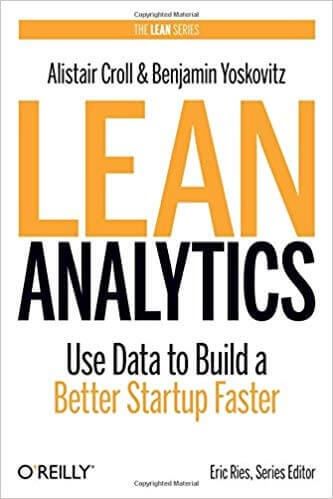
You have probably already heard of the Lean series, especially the concept of the Lean Startup. In Lean Analytics authors complement the framework of Eric Ries and give a detailed introduction into measuring the results.
The Lean Startup differentiates 3 stages:
- Building
- Measuring
- Learning
The second phase (which is the main topic of the book) is about data-driven thinking which is not just about measuring, but it influences how we build things and learn from the results either. Croll and Yoskovits give useful advice for all the three stages.
What, when, how, and why should we measure?
Lean Analytics answers all of these questions.
A good metric is understandable, comparable, and most importantly, able to change our behavior.
The authors attach great importance to both quantitative and qualitative metrics. They describe real metrics and the so-called “vanity metrics” metrics and warn against the latter.
Vanity metrics include page views, followers, Facebook friends, or email subscribers. No substantiated conclusions can be drawn from these figures. For example, the number of email subscribers does not take into account the email opening rate, so it can be misleading in itself.
The authors warn against setting goals either. It is not worth setting goals too early, as different metrics are important in the early stages and these often change.
The book also touches on the potential of segmentation, cohort analysis, A / B testing, and multivariate testing.
The book can be interpreted separately from the Lean Startup universe. The authors write in detail about planning, problem recognition, and provide us with advice that can be applied beyond the world of marketing.
How do you spend your time?
Do
- something in which you are good
- what you want to do
- something with you can make money
Croll and Yoskovits write in detail about the use of Lean Canvas during the design process.
They utilize case studies to make it easy to understand.
What should we measure? The authors introduce the concept of OMTM (One Metric That Matters). OMTM forces us to set clear goals, and clarify our priorities.
The book presents six business models with world-renowned examples and the metrics most commonly measured for the models, typical measurement errors, and monetization opportunities.
- E-commerce (WineExpress)
- Software as a service — Saas (Moz)
- Mobile applications (LocalMind)
- Media Sites (The New York Times)
- User-Generated Content (Facebook)
- Bilateral Marketplaces (Airbnb)
In addition to business models, Lean Analytics also writes about the development phases of startups, share tips, and measurement priorities that can be applied in each phase.
Going beyond startups, we can also read about the applicability of a lean mindset in a corporate environment and the intrapreneur concept in the book.
Lean Analytics is not just about measurement and data. It provides attitude-forming, practical tips that can be applied to countless segments of the business.
3. Nir Eyal: Hooked
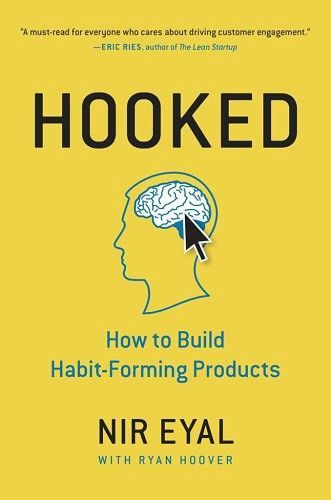
Why do we feel compelled to use our phone non-stop?
What’s the secret of Facebook, Twitter, Reddit, or World of Warcraft that makes it almost addictive?
By gathering the common features of the products that shape habit, Nir Eyal has created a model that he shares with us in his book.
Changing our habits is painful.
If you want to introduce a new habit
- it should be useful:
- it should be a pleasure,
- it should eliminate pain.
The author makes a clear distinction between addictions and habits.
While self-destruction is an inevitable element of addiction, habits can have a positive impact on our lives.
When designing products, the first important question we need to ask ourselves is whether we are designing a vitamin or painkiller.
The vitamin is good to have, but we could live without it. We constantly need painkillers, they are indispensable.
Habit-forming products usually start as vitamins and become painkillers.
Nir Eyal breaks down the process leading to habit formation into four phases:
- Trigger
- Action
- Variable reward
- Investment
The book details the essential elements of each phase. The author illustrates the features of addictive products with popular examples such as Pinterest, Instagram, or League of Legends.
In addition to sharing the formula of habit-forming products, the author also analyzes the practical usability of the formula in a case study. At the end of the book, we can also read about the ethical issues of applying the method.
Whether you’re a marketer interested in developing habit-forming processes or just an ordinary person who wants to reduce his app usage, Hooked can benefit you.
4. Ann Handley: Everybody writes
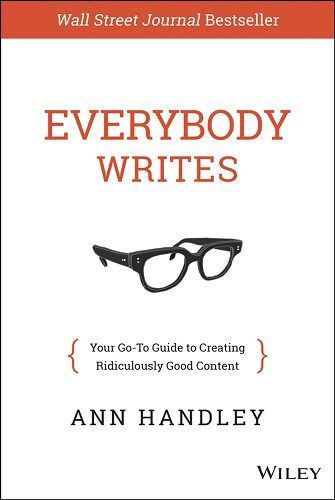
Ann Handley pours 25 years of writing experience and unprecedented practice in content marketing into her book. It refutes the common notion that someone either has a talent for writing or hasn’t.
The author gives us hands-on tips, checklists, and tools to use because, in his experience, writing can be learned.
The book is built around three principles.
According to these principles, a good text is
- Helpful — Solves a problem
- Inspirational — Makes you read more or take action
- Empathic — Writing is about the reader, not the writer
Communication always has a purpose. Ideally, our text will answer questions, whether it’s a new PR campaign for a large company or an air freshener user guide.
We can’t write about ourselves because no one would care. As we write, we need to look at events through the reader’s glasses because we want to convey a message to him. The identity and opinions of the writer are often irrelevant.
From theoretical explanations and general advice, the book soon turns to practical advice such as the mysteries of writing a good outline, the importance of a terrible first manuscript, or the secrets of proofreading.
I didn’t even think that if we read our text backward, we could spot more mistakes.
There are so many corners of writing in the book that Ann Handley touches that they can’t even be listed. Finding a writing partner, making writing a habit, or just the role of humor are all pieces of advice that may not have been important to us before but we can take advantage of them.
An entire chapter discusses grammatical curiosities, the most common mistakes, and suggested alternatives to incorrect formulas. If you write in English, this chapter will be a treasure trove for you.
The second part of the book is specifically for marketers
Social media and email marketing tips, the timing of posts, and improving our LinkedIn profile are also discussed (The most common word in LinkedIn profiles is the word responsible — Never use it).
A practical online marketing book should not skip on proposing tools either. The author gives us specific apps and websites that improve readability, help editing, and research. My favorite, though, is the last chapter of the book, where Ann Handley lists the mass of stock photo websites that don’t look like stock photos.
Everybody Writes is one of the most comprehensive books on copywriting with practical advice. This is a book that does not allow itself to be put down. Ann Handley is using his pieces of advice which you can also apply immediately.
Bonus advice: Join Ann Handley’s newsletter to write better and get up-to-date marketing stories
5. Al Ries, Jack Trout: The 22 Immutable Laws Of Marketing
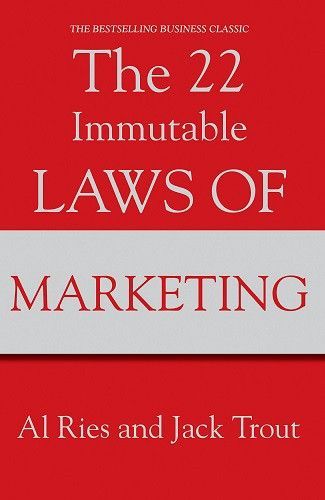
I have a long list of recommended marketing books and The 22 Immutable Laws Of Marketing was on the list for a long time. I always come across someone who directed my attention to this book.
There are books published one or two years ago that already contain obsolete tactics and tips, so their usefulness can be questioned. Most of the marketing books are analyzing case studies, give actionable tips, or look at the marketing from a bird’s-eye view.
Al Ries and Jack Trout’s book are the latter. However, these marketing philosophy lessons can be applied to the current state of marketing if we bother to think.
+1 Rand Fishkin: Lost and Founder
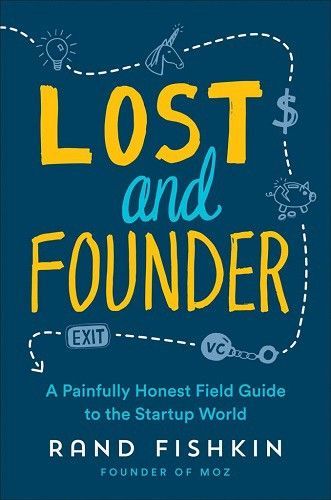
If you’ve come across any form of search engine optimization, chances are the name of the founder of Moz also sounds familiar.
The Whiteboard Friday, dreamed up by Rand Fishkin, was one of my first encounters with SEO. The founder of Moz has been helping us in the field of content marketing and search engine optimization for many years with quality tutorials, blog posts, and iconic Whiteboard Friday videos.
But what happened behind the scenes in the meantime?
What difficulties did he encounter while building one of the greatest SEO software?
Why did he leave Moz, what did he learn from startup existence and what is he doing now?
Rand Fishkin published his book in 2018 which provides an exhaustive answer to each question.
Lost and Founder is not a marketing book listing best practices, but it is not a business book discussing the structure of Moz either. Lost and Founder is all about SEO, software, startups, human values, and Rand Fishkin.
We can learn more from the plethora of personal stories than if we read thousands of boring case studies. In addition to Moz’s investments, we also learn about the company’s marketing strategy, culture, and product development.
But the book is not just about business.
The book is not primarily about business.
Stories about conversion rate optimization and email growth hacks are always followed by a surprisingly honest confession. Rand Fishkin speaks honestly about his depression, his failures, and the pitfalls of startup culture. He concludes the book with a summary of his experiences and shares his new large-scale plans with us.
Reading list for marketers
Online marketing and business books discussed also often refer to each other and other books. I’ve read the books above through references, testimonials, and lengthy research, but the list of good books doesn’t end here.
I currently have the following books on my reading list:
- Robert B. Cialdini: Impact — The Art of Influence
- W. Chan Kim: Blue Ocean Strategy
- Scott Brinker: Hacking Marketing
- Sean Ellis: Hacking Growth
- Steve Krug: Don’t Make Me Think
- Guy Kawasaki: Selling the Dream
- Martin Lindstrom: Buyology
- Joe Pulizzi: Content Inc.
What would you add to the list?



